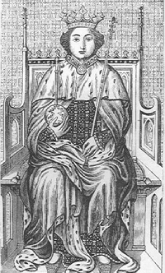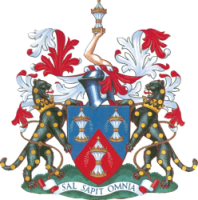Company History
Overview
The Salters' Company received its first licence from Richard II in 1394, but like other Livery Companies, was probably in existence prior to 1066.
Since before the Romans, the Anglo Saxons had developed methods of extracting salt and the importance of salt was well established. Roman soldiers were given salt rations and this “Sal” is the origin of the word “salary”. A soldier failing in battle or falling asleep at his post was “not worth his salt”.
By the fourteenth century, salt was an essential commodity in England. It was used mainly for preserving meat and fish before the advent of tin cans and refrigeration. Other uses included any operation where ‘chemical’ action was required, such as cleaning, dyeing fabric, bleaching, degreasing, dehairing and softening leather and in the formulation of medicines and ointments.
As well as dealing in salt, Salters were experts in the dry salting of fish and meat and also dealt with flax, hemp, logwood, cochineal, potashes and chemical preparations. The modern day association of The Salters’ Company with chemistry and science can therefore be traced right back to its roots.
Click here for a Salters' Company timeline and a few other interesting dates in history.

Formation of Fraternity
By 1394, Bread Street in London was the home of many salt traders, replacing the original tenants who traded in bread and after whom the street was named. As trading in salt became more important in large cities and near ports where much salt was imported, these "Salters" began to group together to look after their own trading interests and welfare. As well as living in the same street, the Salters also regularly attended the same church, the Parish Church of All Hallows, Bread Street.
Disputes Between Traders
During this time there were numerous other craft and trade organisations operating in medieval England and quarrels began breaking out between crafts interested in manufacture or production and those whose main concern was trade. There were also internal disputes occurring between different sections of the same trade with lines of operations overlapping and some finding the policy of trade control too restrictive. Furthermore, in London the Mayor and the City administration tried to exert greater control and regulation, which further caused concern amongst the traders. One way of alleviating this was for Salters to become elected to the Court of Common Council in order to exert some influence to their advantage.
Foundation of the Company
By 1394, the monarch of the day, King Richard II, had come to the conclusion that the best way to stop these disturbances and bring revenue to the Treasury was to issue licences to all traders in the form of letters patent which included a set of rules to bring the traders back into line and limit their power. Therefore in this same year a licence was obtained from King Richard II to found a Fraternity and Guild of Corpus Christi in the Church of All Hallows, Bread Street, and to convey property to the Fraternity. At that time, the Fraternity was composed entirely of those who followed the trade of Salter, whether or not they lived within the parish, but over the years membership has expanded to include many other professions.
Purpose of the Fraternity
Trade and craft associations were formed to protect customers, employers and employees by setting standards, checking weights and measures, and imposing penalties on those who broke the rules. Members of these associations trained the young, set up apprenticeships and looked after members who had fallen on hard times, as well as those who were sick and in old age. The Salters' Company Almshouses were all originally established for the primary purpose of providing for disadvantaged members of the Company. The "fraternity" also extended to enjoying each other's company and celebrating together.







